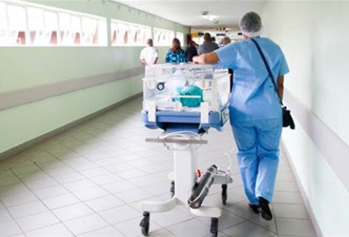NEW YORK (Reuters) - While big media covered the mass destruction brought by Hurricane Katrina with helicopter images and satellite weather maps, blogs have been telling stories with similar force, but on a much more personal level.
Linking to the internet's global computer network with a combination of old-school and newfangled technologies -- namely backyard diesel generators, mobile phones and stubborn will -- several websites related often graphic first-hand accounts and snapshots.
"Trees down everywhere. Neighbor (has) 3 trees on house. Southern yacht club burning to the ground," said the Gulfsails blog (gulfsails.blogspot.com), launched by Troy Gilbert as a local sailing and boat racing resource that turned into a blow-by-blow of Katrina's effect on a New Orleans neighborhood.
More and more, bloggers, who frequently post short messages on internet websites, are becoming an information source, particularly for fast developing stories in remote areas. Blogs gained prominence during the 2004 US Presidential election, when conservative and liberal writers became regulars on the campaign trail.
The audience for the narratives is growing. According to comScore Media Metrix, more than 1.7 million online searches were conducted on 29 August containing the words "Hurricane" and/or "Katrina", a more-than-tenfold increase over the daily average during the five days ending 26 August.
"Bloggers outside the area are doing their best to amplify the first-hand accounts," said Mark Crispin Miller, professor of media studies at New York University.
Richard Lucic, a Duke University Computer Science professor, said the reports from the US Gulf Coast region may have helped propel the acceptance of blogs, as well as podcasts, or audio files than can be recorded and listened to on a computer or digital music player, like Apple Computer's popular iPod.
"It adds immediacy and on-site appeal," he said. "What it does is brings it down to the human level since anybody can do it with a very small investment and no training."
Blogging from a city underwater
From a room crammed with dozens of racks of computer servers, cooling units, and wires, Michael Barnett, remained holed up in a downtown New Orleans high rise, posting to his "Survival of New Orleans" blog (http://www.livejournal.com/users/interdictor) while running a domain name registration and web hosting service. He and his partners stayed connected when 80 percent of the city was underwater.
"I can leave (but) I won't leave. My city is drowning and burning at the same time. We are the only internet connection still alive in the city and we're going to stay here because our customers are counting on us," Barnett told Reuters via instant messenger from his post not far from the New Orleans Superdome.
Key to his service's survival was a stockpile of food and water that the company kept on hand for weekly lunches, and most importantly, a massive generator installed for backup power.
Local media also hosted blogs including WWL-TV (http://www.wwltv.com/local/stories/WWLBLOG.ac3fcea.html) and The New Orleans Times-Picayune's breaking news feed (http://www.nola.com/newslogs/breakingtp/), which featured items about rising insurance rates, bodies found at a nearby hospital and free textbook given to displaced college students.
At the blog Slimbolala, (Slimbolala.blogspot.com/) a husband and father of two details the family's travels to Memphis -- away from the storm -- and decision to head back to the Gulf Coast. On Monday, he posted: "We just found out that the first floor of our house is chest deep in water."
Later in the week, hoping to raise the spirits of those around him, he asked for blog readers to send in good -- or even bad -- jokes. More than a dozen did, including one from a Washington DC-based journalist about pirates who wear, ahem, "ARRRRgyle" socks.
In Katrina's aftermath, the flood waters have begun to recede in New Orleans, but local blogs late this week continued to giving tidbits of information to those who had evacuated and detailing other unforseen health issues.
"With everyone's swimming pools turning stagnant and fetid, the mosquitoes are becoming a major issue," the Gulfsails blogger wrote. "We need, in the least, to have...pesticide spraying planes and/or chlorine. I really don't think it'd be such a good idea to have New Orleans turn into a malarial swamp again."
PluggedIn: Technology that took on a hurricane
By
Franklin Paul
on Sep 19, 2005 9:30AM
Got a news tip for our journalists? Share it with us anonymously here.
Partner Content
_(11).jpg&h=142&w=230&c=1&s=1)
The Compliance Dilemma for Technology Partners: Risk, Revenue, and Reputation

Promoted Content
From Insight to Opportunity: How SMB Service Demand is Shaping the Next Growth Wave for Partners

Channel faces AI-fuelled risk as partners lag on data resilience, Dicker Data summit told

Tech Data: Driving partner success in a digital-first economy

Shure Microsoft Certified Audio for Teams Rooms





.jpg&w=100&c=1&s=0)
_(8).jpg&w=100&c=1&s=0)







.jpg&q=95&h=298&w=480&c=1&s=1)





